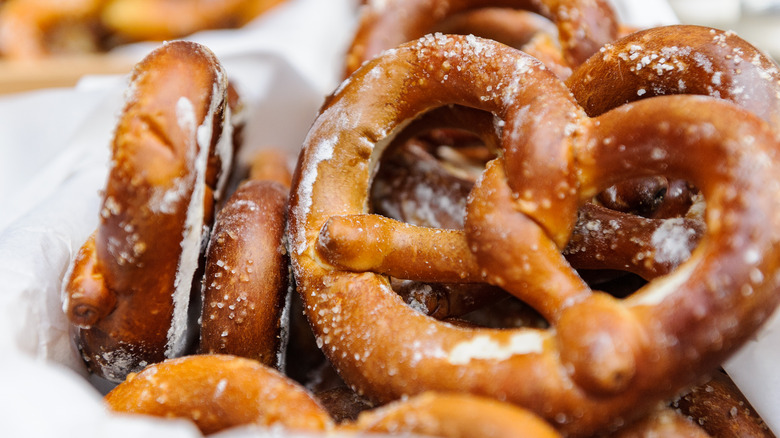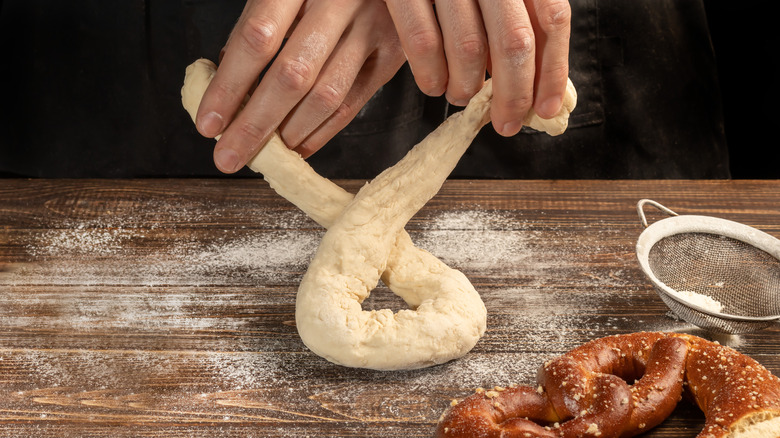How Did The Pretzel Get Its Shape?
Aside from a perfectly-baked crust, soft doughy interior, and a sprinkling of salt, pretzels are known for their unique design. The knotty loop has come to characterize the bread even as pretzel recipes have evolved from the traditional soft recipe with different flavors and textures.
Tasting History with Max Miller relays a recipe from a 1581 cookbook that more closely resembles a crumbly crisp than a soft bread, with ingredients including flour, egg yolk, wine, anise, sugar, and cinnamon. Pretzels were made by hand until 1935 when the Reading Pretzel Machinery Company used an automated machine that could pump out 245 pretzels per minute (per History).
Since German and Swiss immigrants brought the pretzel to North America in the 19th century, the baked treat has become a beloved one — and an industry that accounts for more than $1 billion (via Pretzels.com). According to Statista, over 181 million Americans ate pretzels in 2020. But how many know the origins of this unique snack?
A shape with many meanings
A few theories attempt to explain the twisted shape of the pretzel, with most attributing a religious element to the three-windowed design. In one story, an Italian monk rewarded students with pretiola, pieces of bread shaped into what resembled folded arms in prayer (via Wonderopolis). German Foods paints a less generous but resourceful portrait of the first pretzels. The site states that monks were trying to make something useful out of leftover bread dough. Yet, in the most nefarious legend, bakers held hostage by French officials made the bread as a desperate plea (per Pretzels).
The Catholic Church has maintained the shape of a pretzel is representative of the holy trinity, according to Wonderopolis, and the simple recipe is ideal for religious periods when foods like dairy and meat are avoided. History notes the pretzel has been associated with love and presented at wedding ceremonies and New Year's parties as a symbol of good luck.
Americans have bread baker Julius Sturgis to thank for the pretzel's popularity in the U.S. Pretzels.com recounts an exchange between Sturgis and a man that ultimately encouraged him to open the first pretzel commercial bakery. Because of his 1861 endeavor, soft pretzels can be easily found throughout the United States, regardless of the treat's origins.

